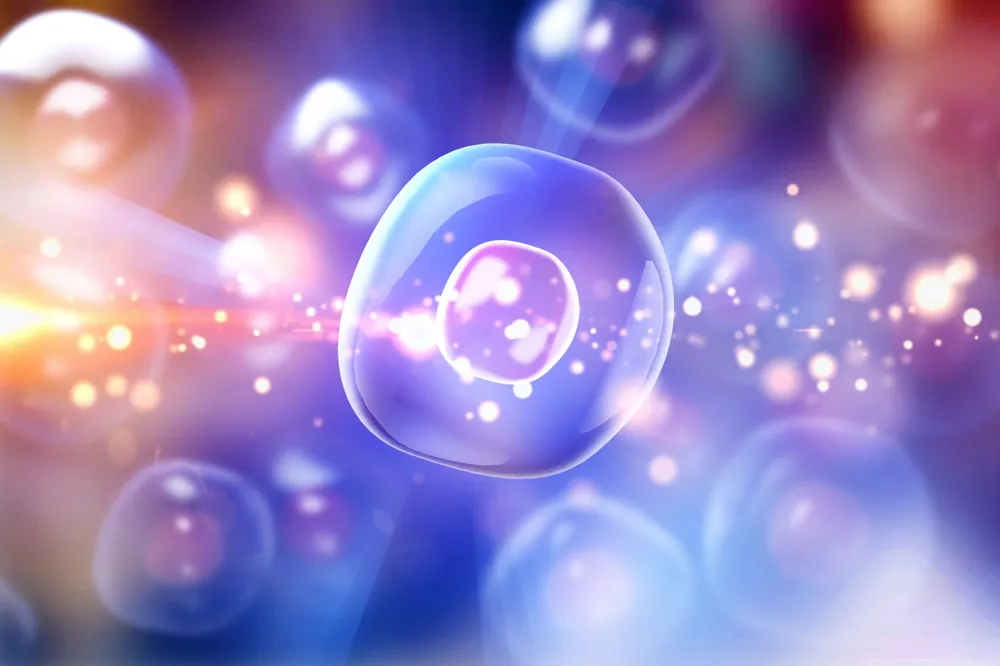Genes in the sirtuin family are conserved across a wide range of species and are involved in cellular metabolism, immune response, and aging. SIRT1 is known to decline during aging, but the mechanisms involved in this process were not known. Now, an international team has clarified how SIRT1 is regulated during cellular senescence [1].

Read More
The cause of decline
The researchers began by checking whether SIRT1 expression changes during senescence. Using RNA sequencing and quantitative PCR, they determined that the expression level remains the same even though there is less SIRT1 protein in senescent cells. In other words, the decline in SIRT1 happens through protein degradation rather than changes in gene expression.
Next, they treated cells with inhibitors of different protein degradation pathways to figure out which one is responsible for the breakdown of SIRT1. Blocking proteasome-mediated degradation didn’t stop SIRT1 levels from declining, but blocking lysosome-mediated degradation did. Since autophagy is one of the major lysosome-mediated processes in cellular senescence, it seemed a likely candidate for SIRT1 degradation.
To test this idea, the team knocked down the autophagy protein Atg7 and monitored SIRT1 during senescence. The knockdown not only prevented the SIRT1 decrease, it restored SIRT1 levels in already senescent cells. These findings clearly showed that the SIRT1 decrease in senescent cells happens via lysosome-mediated autophagy.
A partner in crime
The team used a combination of immunofluorescence and immunoprecipitation to tease apart the details of SIRT1 autophagy. They found that SIRT1 is normally in the nucleus but moves into the cytoplasm as cells become senescent. In the cytoplasm, SIRT1 colocalized with LC3, a protein involved in autophagy. Further work confirmed that SIRT1 and LC3 interact directly and that this interaction is required for SIRT1 autophagy during senescence.
In fact, the interaction between SIRT1 and LC3 becomes stronger during senescence. The study showed that this is due to decreased phosphorylation of SIRT1 in senescent cells, and the researchers even identified the specific SIRT1 amino acids involved in the interaction.
Finally, they measured SIRT1 protein levels in mice during natural aging and found a decrease in the spleen, testes, and thymus but not in other tissues. Treating mice with an autophagy inhibitor stopped the SIRT1 decline in old mice without changing the levels in young mice. They also repeated the experiment in human T cell cultures from older donors, demonstrating that the same mechanisms are at play in human cells.
SIRT1 (Sir2) is an NAD+-dependent deacetylase that plays critical roles in a broad range of biological events, including metabolism, the immune response and ageing1–5. Although there is strong interest in stimulating SIRT1 catalytic activity, the homeostasis of SIRT1 at the protein level is poorly understood. Here we report that macroautophagy (hereafter referred to as autophagy), a catabolic membrane trafficking pathway that degrades cellular components through autophagosomes and lysosomes, mediates the downregulation of mammalian SIRT1 protein during senescence and in vivo ageing. In senescence, nuclear SIRT1 is recognized as an autophagy substrate and is subjected to cytoplasmic autophagosome–lysosome degradation, via the autophagy protein LC3. Importantly, the autophagy–lysosome pathway contributes to the loss of SIRT1 during ageing of several tissues related to the immune and haematopoietic system in mice, including the spleen, thymus, and haematopoietic stem and progenitor cells, as well as in CD8+CD28− T cells from aged human donors. Our study reveals a mechanism in the regulation of the protein homeostasis of SIRT1 and suggests a potential strategy to stabilize SIRT1 to promote productive ageing.
Conclusion
This work deepens our understanding of SIRT1 and the role it plays in aging. Knowing how SIRT1 levels change opens the possibility of interventions to prevent it, which may be especially useful in dealing with immune cell aging. It’s also interesting to see autophagy involved in promoting senescence, since it’s generally considered a quality-control pathway that helps maintain health. This highlights the difference between bulk and selective autophagy, a topic that will likely reward further research. Likewise, clarifying the pathways that control SIRT1 phosphorylation to trigger its degradation during senescence may also prove a fruitful research avenue.
Literature
- Xu, C., Wang, L., Fozouni, P., Evjen, G., Chandra, V., Jiang, J., Lu, C., Nicastri, M., Bretz, C., Winkler, J.D., Amaravadi, R., Garcia, B.A., Adams, P.D., Ott, M., Tong, W., Johansen, T., Dou, Z., and Berger, S.L. SIRT1 is downregulated by autophagy in senescence and ageing. Nature Cell Biology, doi: 10.1038/s41556-020-00579-5







